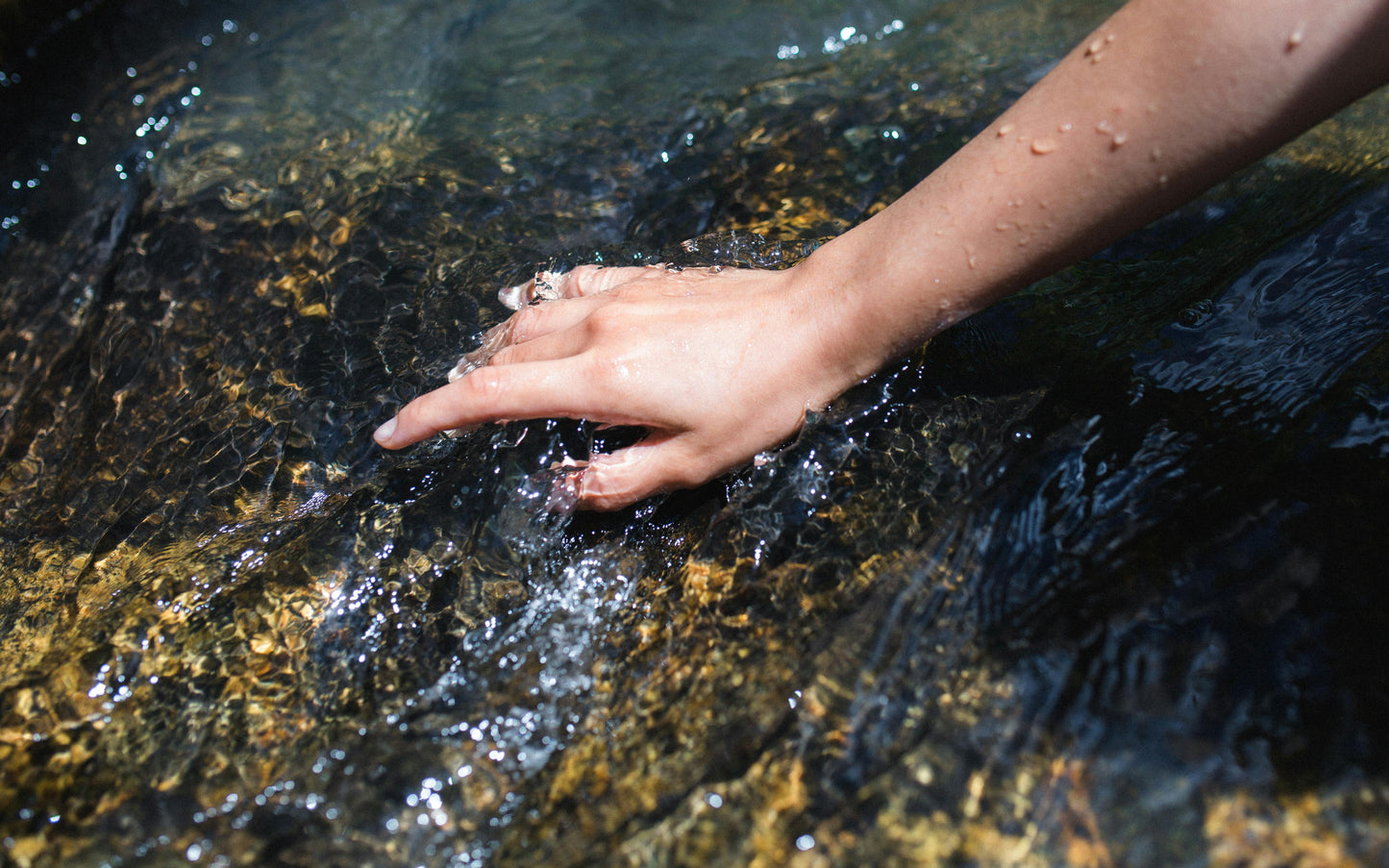
You know that feeling when your skin just looks… tired? No amount of moisturizer helps, your makeup won’t sit right, and suddenly fine lines seem to pop up out of nowhere. That’s not “bad skin.” That’s thirsty skin.
Thirsty skin looks like:
- Dull or flat complexion
- Fine lines that feel like they appeared overnight
- Dry patches or that tight, uncomfortable feeling
- The dreaded “nothing works” moment after moisturizing
Sound familiar? You’re not alone. And there’s a name for the remedy: skin flooding.
Why Skin Gets Dehydrated (the Science)
Even if you drink water, your skin can still get dehydrated. Here’s why:
- Heat + humidity shifts: In summer or warm climates, your skin loses water faster through evaporation. This is called transepidermal water loss (TEWL).
- Air conditioning: Cool indoor air is often bone-dry, sucking moisture right out of your skin.
- Over-cleansing: Harsh cleansers strip away natural oils that help lock in water, leaving your barrier compromised.
- Aging + fine lines: As collagen and natural humectants decline, your skin holds less water on its own.
The result? Skin that looks dull, uneven, and unresponsive—even if you just applied your “richest” moisturizer.
What Is Skin Flooding?
Think of skin flooding as first aid for thirsty skin. It’s the practice of drenching your skin with multiple lightweight, water-based layers (usually 3–7), applied quickly and intentionally right after cleansing.
Each layer acts like a hydration “deposit,” soaking deeper into your skin instead of sitting on top. By the time you seal it with a moisturizer, your skin isn’t just damp. It’s full of hydration, plump, and ready to repair throughout the day/night.
Why It Works (Evidence Meets Botanicals)
Science tells us that hydrated skin = healthier skin. When your skin has enough water:
- Cell turnover improves (translation: glow).
- Your barrier stays intact, preventing irritation and premature aging.
- Fine lines soften because skin is plump from within.
Now here’s where botanicals make the difference:
- Aloe vera is a natural humectant, drawing water into your skin and calming irritation at the same time.
- Willow bark extract provides gentle exfoliation while delivering hydration, so skin looks clearer and smoother.
- Lavender extract soothes sensitivity and reduces redness, helping your hydration layers work harder without stress.
- Rice and cucumber extracts help bind water to the skin, keeping hydration locked in for longer.
This is why flooding with Noella B’s Wild Willow Bark Elixir and Blooming Lavender & Aloe Toner works so beautifully. They aren’t heavy creams, they’re lightweight, water-rich botanicals designed to absorb fast, layer well, and transform your skin from dull to dewy.
How to Skin Flood (Step by Step)
- Cleanse gently. Skip the harsh, squeaky-clean washes. Start with a balanced, non-stripping cleanser.
- Apply your first layer fast. Within 30–60 seconds of cleansing, pat on a water-based toner (think Wild Willow Bark Elixir).
- Layer it up. Repeat 3–7 times. Alternate with another toner like Blooming Lavender & Aloe for soothing hydration. Each layer should feel slightly tacky but never heavy.
- Seal it in. Once your skin feels plump and bouncy, finish with your moisturizer to lock in all that hydration.
Skin Flooding Is Not Just a Trend. It’s A Path to Healing
This isn’t about “extra” skincare. It’s about meeting your skin where it’s at. When your skin is thirsty, it can’t repair, can’t protect, and can’t glow. Skin flooding changes that by replenishing what’s missing: water.
And when that hydration comes from botanical actives, your skin doesn’t just look alive again, it feels supported, balanced, and resilient.
Your skin doesn’t need more heaviness and thick moisture. It needs more water. It needs nourishment.
Skin flooding is the simplest way to reset your complexion, and with Noella B, it’s powered by botanicals that clear, calm, and restore.
💧 It’s time your skin felt alive again. Try layering with the Wild Willow Bark Elixir and Blooming Lavender & Aloe Toner and see the difference in just one week.



